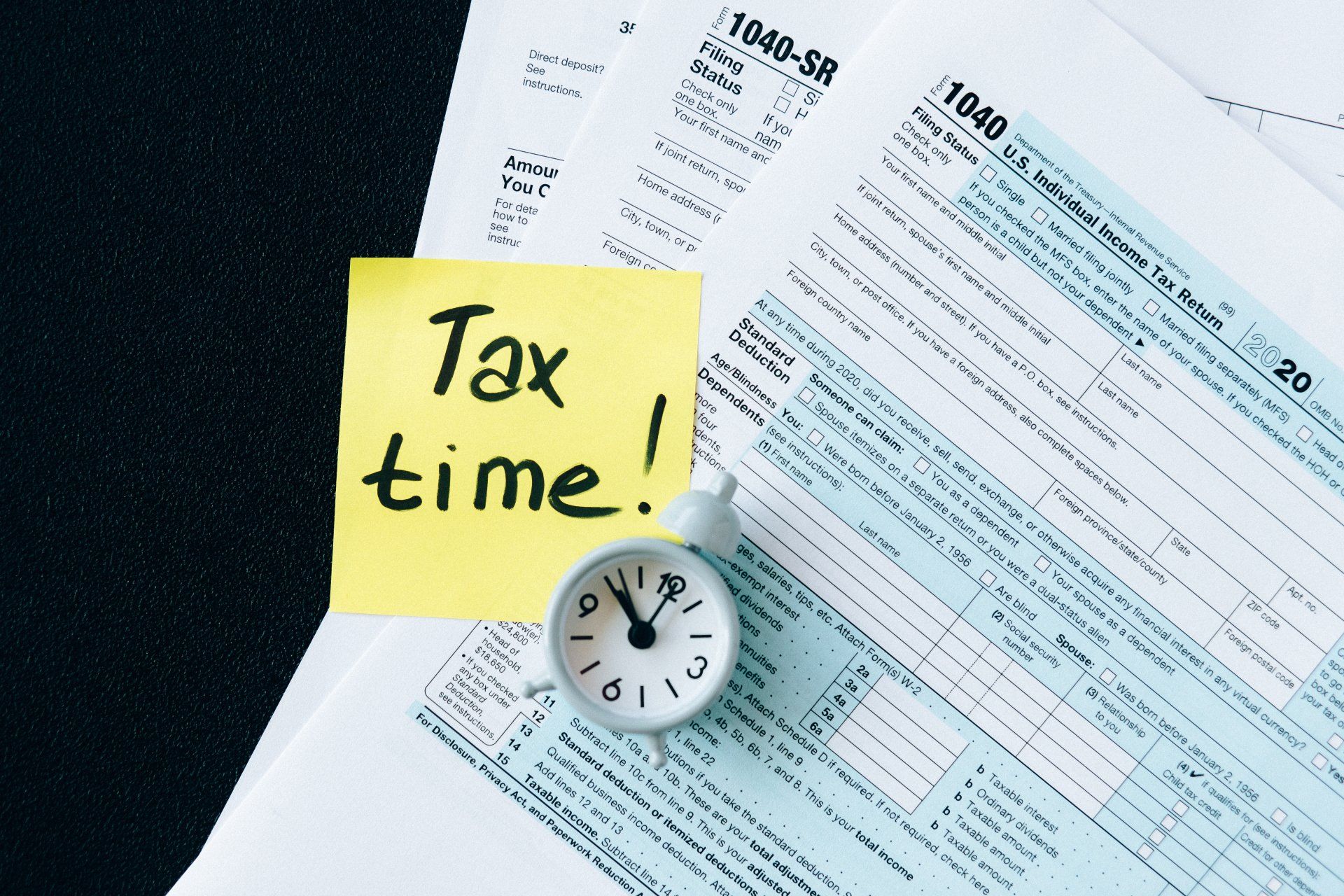Incorporation - An Overview
Tax Simplified 4 You | 18 January 2021
The two methods of incorporation
The trade of a sole trade or a partnership can be incorporated either by:
a) Transferring the business to a company in exchange for shares in the company; or
b) Selling the assets of the business to a company already incorporated by the Sole Trader/Partners either at market value or at a value lower than market value. Usually the company will not have the funds readily available to pay the purchase price of the assets, and so the consideration is left outstanding as a loan due to the former sole trader/partners.
This loan can be repaid free of all tax as and when the company has the available funds.
Capital Gains Tax ("CGT")
Under general capital gains principles, the transfer of assets from a sole trade/partnership to a connected party, such as a company owned by the Sole Trader/Partners, is deemed to be a disposal occurring at market value.
Where the actual consideration is in the form of shares, or where the consideration is lower than the market value, reliefs from CGT can be claimed to reduce and often eliminate the CGT liability arising on incorporation.
Relief for a share for share incorporation is under TCGA 1992 section 162, while relief for a sale at under value is under TCGA 1992 section 165.
Trading Losses
Where a trade is carried on by a sole trader or individuals in a partnership and the trade is transferred to a company for consideration consisting wholly or mainly of the allotment of shares in the company, then any unrelieved trading losses of the Sole Trade or Partnership can be carried forward under ITA 2007 section 86 and relieved against future income received from the company, whether by way of dividends, salary or other income.
The loss relief continues to be available as long as the company continues to carry on the transferred trade and the individual sole trader or partners retains all the shares in the business, although in practice HMRC will not refuse a claim as long as the individual retains at least 80% of the shares.
The key condition for this relief to apply is that the consideration for the transfer must be wholly or mainly in shares. It is understood that HMRC regard “wholly or mainly” as meaning at least 80%. Therefore the availability of carrying forward trading losses is usually only available in circumstances where an incorporation has been carried out under TCGA 1992 section 162 (i.e. transfer of business in exchange for shares) rather than section 165 (sale of assets at market value or under market value).
For example, if a Partnership has estimated trading losses of £1mn as at incorporation, these losses would be available to be offset against future dividends or salary received from the company. In simple terms, £1mn can be extracted from the Company without any further tax liability arising on the shareholders.
Share consideration v cash/loan consideration
The trading losses can therefore only be preserved where a business is incorporated wholly or mainly in exchange for shares. Salary or dividends can be extracted from the Company and the losses can be used to eliminate any tax liability on such income in the hands of the shareholder.
However, this position must be compared with a sale of assets at undervalue. Under this scenario, the assets of the business that are chargeable assets for capital gains tax purposes are usually sold at less than market value for an amount equal to their capital gains tax base cost.
Business Asset Gift Relief
Under general capital gains principles, a transaction otherwise than at arm’s length, such as an intentional sale at an undervalue, is deemed for capital gains tax purposes to be a disposal occurring at market value.
Where the conditions of TCGA 1992 section 165 (known generally as Business Assets Gift Relief) are satisfied, the deemed disposal proceeds are reduced to such an amount as will give rise to neither gain nor loss. The recipient of the asset has a corresponding reduction in the acquisition cost of the assets for the purposes of a future disposal.
The general scheme of TCGA 1992 section 165 is uncomplicated as far as its application to business incorporation.
The first and overriding condition is that the relief applies to disposals ‘otherwise than by way of bargains at arm’s length’.
Consequently, it applies to sales which occur at a value less than market value. There are then three other types of condition for a claim to be made, which are:
a) the transfer must be made by an individual or partner (other than a corporate partner);
b) the transfer must be made to a person who is resident in the UK; and
c) the assets transferred must be used in a trade, profession of vocation carried on by the transferor.
There is a restriction in the availability of the relief if the assets in question have not been used for business purposes throughout the period of ownership.
Capital Allowances
Annual Investment Allowance (AIA), Writing-Down Allowances (WDAs) or First-Year Allowances (FYAs) are not given in the final year of trading.
The transfer on the incorporation of a business of plant and machinery is a disposal of those assets for capital allowances purposes.
Where the assets are sold, the disposal value is the amount charged for the transfer.
As the Sole Trade/Partnership and the Company are connected, and the assets are being sold to the Company, rather than gifted, then the Sole Trade/Partnership has 2 options:
a. The disposal can be brought into the tax computation at the actual sale proceeds; or
b. the Sole Trade/Partnership and the Company can make a joint election for the assets to be transferred, for capital allowances purposes, at their tax written down value ("TWDV"). The deadline for making the election is two years from the date of the transfer.
The most tax efficient scenario is likely to be a sale of the assets to the Company at a price that creates a balancing charge in the Sole Trade/Partnership which uses up all or most of the available tax losses at the date of incorporation.
This will allow the Company to claim capital allowances on as high a value as possible.
Note that the value of the assets used for the transfer must not exceed their market value.
Stamp Duty Land Tax ("SDLT")
SDLT is only payable when there is chargeable consideration in respect of a transaction in land. For the purposes of this section, transactions in land refer to UK land. Chargeable consideration is usually the purchase price paid for the land in money or money's worth, but it also includes the purchaser/acquirer taking over an existing debt (e.g. a mortgage).
With effect from December 4, 2014, SDLT is payable on the portion of the purchase price that falls within each band, rather than a single rate being charged on the whole transaction value.
The tax rates and bands for non-residential and mixed-use land and property are:
Property transfer value SDLT rate
Up to £150,000 0%
Next £100,000 (from £150,001-£250,000) 2%
The remaining amount (above £250,000) 5%
Inheritance Tax ("IHT")
For persons domiciled in the UK, IHT is chargeable on death on their worldwide estate. The rate chargeable on death is 40%.
There are a number of reliefs and exemptions available. For example, assets bequeathed to the surviving spouse are exempt from IHT.
Business property relief ("BPR")
An important relief is BPR. An asset which is a business or an interest in a business is eligible for 100% BPR.
Similarly shares in an unquoted trading company qualify for 100% BPR, as do securities of a company which are unquoted and which either by themselves or together with other such securities owned by the transferor and any unquoted shares give the owner control of the company.
A person has “control” of a company for these purposes if he has sufficient powers of voting on all questions affecting the company as a whole which if exercised, would yield a majority of the votes capable of being exercised.
A person can include related property for these purposes, which includes the shares owned by their spouse.
Certain businesses are excluded from the relief, such as businesses dealing in securities, stocks, shares, land or building and businesses that make or hold investments.
The general rule is that property does not qualify for business property relief unless it was owned by the transferor throughout the two years immediately preceding the transfer.
The general rule is relaxed in three situations:
a. Where the transferor became entitled to the property on the death of another person
b. Where the transferred property replaced other business property
c. Where the transferred property had been acquired on an earlier transfer within the two year period
Other Tax Consequences of Incorporation
Where an unincorporated business is transferred from a Sole Trade/Partnership to a company, the following additional tax consequences arise:
- The transfer will result in a cessation of the Sole Trade/Partnership business and, depending upon the date concerned, may lead to more than 12 months profit being assessable for the final year of assessment, subject to overlap relief.
- The sale, if it qualifies as a ‘transfer of a going concern’, will be outside the scope of VAT. After the transfer the transferor should take steps to deregister;
- Liability for National Insurance Class 2 contributions will cease if the transferor(s) has no continuing self-employed earnings.
- The former proprietors will normally become directors and shareholders of the company and therefore chargeable to income tax on employment income and dividends
Thinking of incorporating? Get in touch to see if we can help you.









